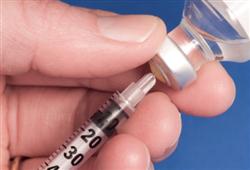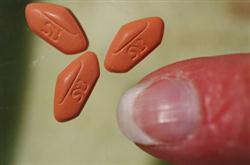Other Types of Diabetes
A number of other types of diabetes exist. A person may exhibit characteristics of more than one type. For example, in latent autoimmune diabetes in adults (LADA), also called type 1.5 diabetes or double diabetes, people show signs of both type 1 and type 2 diabetes. Diagnosis usually occurs after age 30.
Most people with LADA still produce their own insulin when first diagnosed, like those with type 2 diabetes, but within a few years, they must take insulin to control blood glucose levels. In LADA, as in type 1 diabetes, the beta cells of the pancreas stop making insulin because the body’s immune system attacks and destroys them. Some experts believe that LADA is a slowly developing kind of type 1 diabetes.
Other types of diabetes include those caused by
- genetic defects of the beta cell, such as maturity-onset diabetes of the young (MODY) and neonatal diabetes mellitus
- genetic defects in insulin action, resulting in the body’s inability to control blood glucose levels, as seen in leprechaunism and the Rabson-Mendenhall syndrome
- diseases of the pancreas or conditions that damage the pancreas, such as pancreatitis and cystic fibrosis
- excess amounts of certain hormones resulting from some medical conditions—such as cortisol in Cushing’s syndrome—that work against the action of insulin
- medications that reduce insulin action, such as glucocorticoids, or chemicals that destroy beta cells
- infections, such as congenital rubella and cytomegalovirus
- rare autoimmune disorders, such as stiff-man syndrome, an autoimmune disease of the central nervous system
- genetic syndromes associated with diabetes, such as Down syndrome and Prader-Willi syndrome
Type 1 and type 2 diabetes
In 1997, to move away from naming the two main types of diabetes based on treatment or the age at onset, an American Diabetes Association expert committee recommended universal adoption of simplified terminology. The National Institute of Diabetes and Digestive and Kidney Diseases (NIDDK) agrees.
| Former Name |
Preferred Names |
Type I
juvenile diabetes
insulin-dependent diabetes mellitus
IDDM |
type 1 diabetes  |
Type II
adult-onset diabetes
noninsulin-dependent diabetes mellitus
NIDDM |
type 2 diabetes  |
Who should be tested for diabetes and pre-diabetes?
The American Diabetes Association recommends that testing to detect pre-diabetes and type 2 diabetes be considered in adults without symptoms who are overweight or obese and have one or more additional risk factors for diabetes. In those without these risk factors, testing should begin at age 45. The Body Mass Index Table can be used to find out whether someone is normal weight, overweight, obese, or extremely obese.
People aged 45 or older should consider getting tested for pre-diabetes or diabetes. People younger than 45 should consider testing if they are overweight, obese, or extremely obese and have one or more of the following risk factors:
- being physically inactive
- having a parent, brother, or sister with diabetes
- having a family background that is African American, Alaska Native, American Indian, Asian American, Hispanic/Latino, or Pacific Islander
- giving birth to a baby weighing more than 9 pounds or being diagnosed with gestational diabetes
- having high blood pressure—140/90 mmHg or above—or being treated for high blood pressure
- having an HDL, or “good,” cholesterol level below 35 mg/dL or a triglyceride level above 250 mg/dL
- having polycystic ovary syndrome, also called PCOS
- having IFG or IGT on previous testing
- having a condition called acanthosis nigricans, characterized by a dark, velvety rash around the neck or armpits
- having a history of cardiovascular disease—disease affecting the heart and blood vessels
If results of testing are normal, testing should be repeated at least every 3 years. Doctors may recommend more frequent testing depending on initial results and risk status. People whose test results indicate they have pre-diabetes should have their blood glucose checked again in 1 to 2 years and take steps to prevent type 2 diabetes.
When a woman is pregnant, the doctor will assess her risk for developing gestational diabetes at her first prenatal visit and order testing as needed during the pregnancy. Women who develop gestational diabetes should also have follow-up testing 6 to 12 weeks after the baby is born.
Type 2 diabetes has become more common in children and teens than in the past, and those at high risk for developing diabetes should be tested every 2 years. Testing should begin at age 10 or at puberty, whichever occurs first. Children and teens who are overweight or obese and have other risk factors, such as a family history of diabetes, are at high risk for developing diabetes.